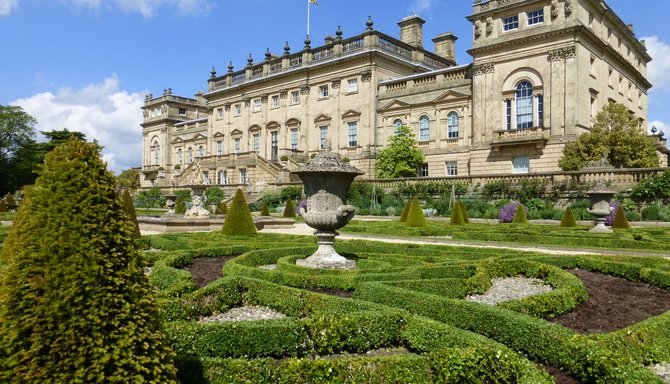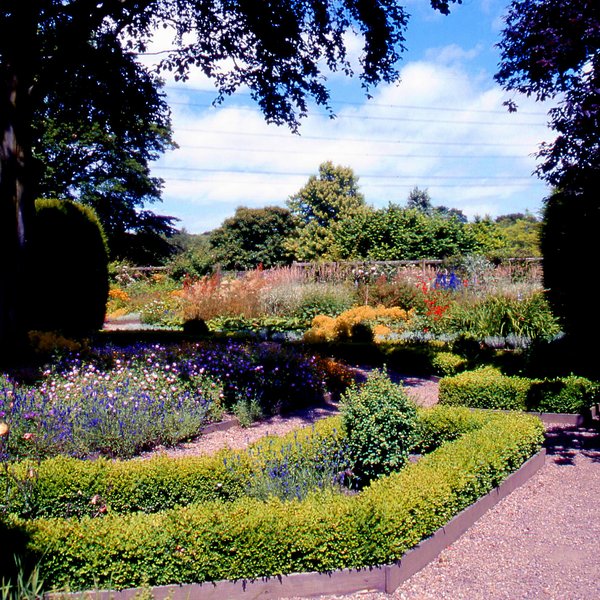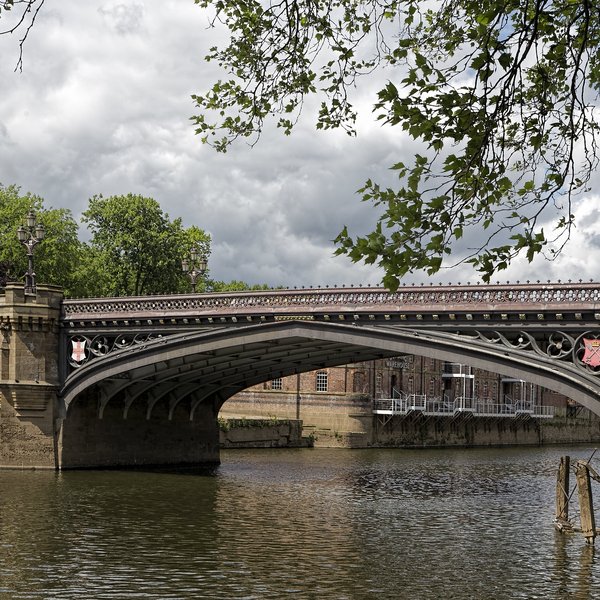
Discover Harewood House
“Preserve for the public benefit Harewood House with its ancillary buildings, gardens, arboreta, woodlands and park; to promote the study and appreciation of Harewood as a place of historic and cultural interest and natural beauty; to provide facilities for recreation and leisure-time occupations; and to advance the education of the public in the arts and the sciences.”
Amid the serene landscapes of North Yorkshire, just a short drive from Harrogate, stands a magnificent testament to British architectural excellence and heritage – Harewood House. This charming stately home, which remains in the possession of the original family, the Lascelles, is a beacon of opulence, history, and culture, designed to be loved by those who inhabit it and enjoyed by those who visit it.

Creating Harewood House
Harewood was built between 1759 and 1771, for Edwin Lascelles, 1st Baron Harewood, a wealthy West Indian plantation and slave owner. Lascelles – wanting nothing short of the best for his new home – employed the finest craftsmen around. Architect John Carr, interior designer Robert Adam, and famous British furniture maker Thomas Chippendale conspired to create the great Harewood House. Outside, Lancelot "Capability" Brown was commissioned to transform the 140-acre grounds into a landscaped masterpiece.

As a prime example of the neoclassical style that characterised the Georgian period, Harewood’s symmetrical design, stately columns, and elegant proportions are a testament to the taste of the era. Being furnished by Chippendale and his son over a 30-year period, Harewood is home to some of the best Chippendale furniture ever created. From regal furnishings for the grandest rooms in the house, to simple benches in the grounds.
Today, the house is a member of the Treasure Houses of England and has been registered as a Grade I-listed building. Additionally, a number of features in the grounds and courtyard have been listed as Grade I, II* and II. Although it is the home of David and Diane Lascelles, the 8th Earl of Harewood and his wife the Countess, it now operates in a trust-ownership capacity managed by Harewood House Trust and is open to the public for most of the year.

Art at Harewood House
Harewood House isn't just a historic mansion; it's also a treasure trove of artwork, period furniture, and ceramics. One of the most notable features is the extensive collection of paintings by masters of the Italian Renaissance; family portraits by Sir Joshua Reynolds, John Hoppner and Sir Thomas Lawrence frame the halls, alongside modern artwork collected by the 7th Earl and Countess. Exhibitions are held in the Terrace Gallery, and they rotate each season.

Stunning Surroundings
Thankfully, the splendour of Harewood House isn't limited to its interiors. The estate also encompasses a grand expanse of ‘Capability’ Brown’s award-winning landscaped gardens, parklands, and woodland. The gardens, of which include the Walled, Lakeside, Terrace, and Himalayan Garden, are filled with a variety of plants from all over the world. Head Gardener, Trevor Nicholson aims to “put Harewood at the top of the list as a place for garden-lovers to visit” and we think they have done just that!

Speaking of Capability Brown, Harewood House holds the distinction of being one of the famed landscape architect's earliest works. His influence is evident in the sweeping lawns, serpentine lakes, and strategically placed follies that grace the grounds. A visit to the estate offers a journey through Brown's genius for transforming natural landscapes into works of art.
There is also a child-friendly Adventure Playground, and Farm Experience to enjoy. And if you forget your picnics, the café is on hand to serve up all manner of delicacies!

Community Engagement and Conservation Efforts
Beyond its grand architectural and landscaping aspects, Harewood House serves as a cultural hub, hosting a wide range of events and exhibitions throughout the year. From art exhibitions and music concerts to educational programs and family-friendly activities, the estate fosters a sense of community and creativity. It also runs a nationally recognised conservation programme, to ensure the continuation of these community events and the preservation of the house and grounds for decades to come. The programme run by Harewood House Trust, pays particular attention to the restoration of historic buildings ranging from Home Farm to Harewood Castle, as well as the protection and development of wildlife habitats and the maintenance of its Listed parkland.

Harewood and its Links to the Slave Trade
The money that was used to build Harewood House was acquired through the Lascelles’ deep involvement in the slave trade – a pervasive fact of contemporary British society. In the 17th century the Lascelles formed the minor gentry of North Yorkshire. Within 100 years they had grown into one of the wealthiest families in England. This was due to their investments in sugar plantations and slavery. The Lascelles lent money to planters and when the planters could not repay their loans, they took over the plantations and the slaves, shortly becoming major slave owners across Barbados and Jamaica. When slavery was abolished in 1838, the Lascelles received £26,000 as compensation for freeing their 1,277 slaves.
“I believe very strongly that we can change things in the present, but for better or for worse there is nothing that any of us can do about history and the past.”
During a 2005 documentary, David Lascelles, the 8th Earl of Harewood and current inhabitant of the stately manor, discussed Henry, his other ancestors, and their links with the slave trade. Furthermore, in 2007 actor David Harewood, whose ancestors had been enslaved by the Earls of Harewood interviewed Lascelles as part of the BBC Look North programme.

Our thoughts...
A visit to Harewood House is a very interesting experience. As guests roam through the elegant portrait-lined halls, they’ll notice that each room is a detailed portal to the past – from the opulent Staterooms to the more intimate family quarters. But it is important to remember that Harewood is not just a stately home; it's also a living reminder of Britain’s turbulent past and its involvement in the most horrifying trade in history.
Interested in finding more places like this? Try one of our Treasure Trails in York - untangle cryptic clues as a team, as you are taken on a journey to the most unique, unusual and bizarre corners of York.
























